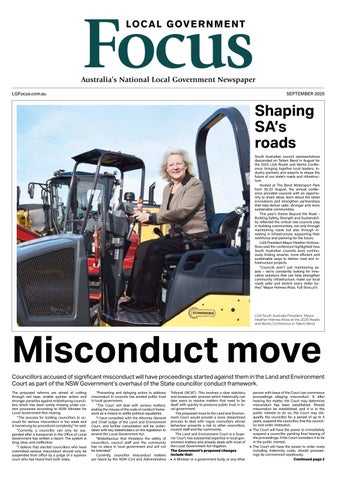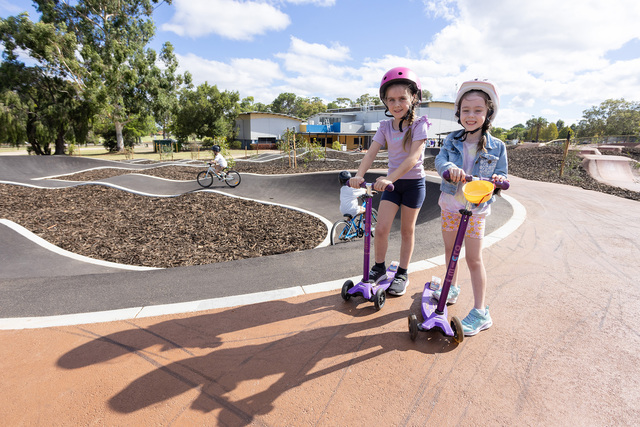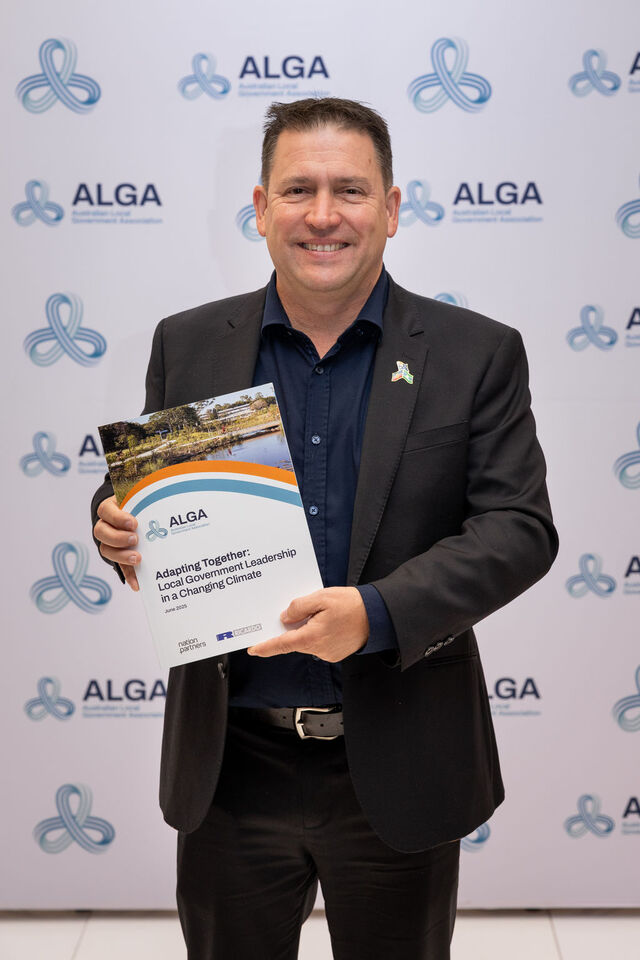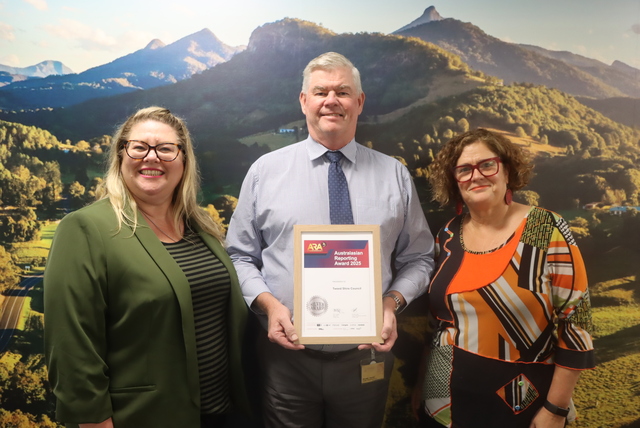A regular feature, this month we have interviewed two Councillors from Tasmania.
Councillor Kelly Spaulding, Tasman Council, Tasmania
Q. How long have you been a Councillor
I was elected to Tasman Council in October 2002 at the age of 25 so I have only served for 20 months. I am also chairman of Council’s Economic Development committee.
Q. Tell us about yourself and your involvement in the community?
I have lived on the Tasman Peninsula all my life and did all my schooling here. Growing up in the area I have been involved in many of groups as they are such an important part of life in a small community. After I left school there were not a lot of jobs in the area at the time so I decided to turn my hobby of growing flowers into a business, as we did not have a florist in the area. It was then only a part time business so I then started doing part time jobs in a wide range of industries including agriculture, fisheries and forestry. In 1999 I joined the Tasman Rotary club. This increased my involvement in the community and allowed my confidence to grow. In July 2002 I was chosen to go to Canberra to the Young Rural Leaders course, and after completion, decided to run for Council and got in. It has been a steep learning curve but one that I have enjoyed.
Q. Describe your community?
Tasman Municipality is made up of a number of small townships. Nestled in the south east corner of Tasmania, it hosts a wealth of visitor attractions as well as providing one of the best areas in the world to live. Tourism is our main industry; complemented by farming, fishing and forestry industries. Our main tourist attraction is the Port Arthur historic site. This unique example of Tasmanian history had 250,000 visitors last year, and it has been estimated that this will increase to approximately 310,000 in the forthcoming year.
As well as the Port Arthur historic site there are many examples of our European heritage to be enjoyed. There is also our Tasman National Park with many bush walks and beautiful coastal scenery. Traditionally almost half of our rate base is made up of non-permanent residents. The area is home to many holiday residences and we have population fluctuations from approximately 2,500 permanent residents to over 10,000 during holiday periods. However, over the last two years that situation has changed dramatically. There are now more full time residents as job opportunities increase with the growth in tourism and downstream services.
Tasman is a close knit community that comes together in times of need. That collective strength has been particularly emphasised on a number of occasions during recent years.
Q. What are the most important issues in your local community?
One of the most important elements is that of a sense of community. This aspect became clear at a recent Futures Search conference held here. This conference brought together a broad cross section of community members with a view to building a shared vision for the Municipality.
Major issues facing the community are about capitalising on our major industry opportunities, particularly tourism. The strategy aims to encourage and support visitor accommodation and services growth. This would then facilitate greater retention rates within the Municipality and increased stimulation of our local economy. The development and support of infrastructure services has been identified as critical to appropriate commercial and residential growth. This element also links strongly to responsible management of our environment, our heritage and integrity.
Sustainability as a community was identified as critical to our future success and this had a number of elements. The strength of our social fabric is intertwined with both our health systems and our community linkages. Support and increased opportunity for young people within the community was a further priority. The other level of sustainability identified as important was our capacity to maintain viability. Among the many options for this, increased emphasis on Council’s entrepreneurial activity has been listed for consideration.
Q. What are the key aspects to being a good councillor
I believe that you need to be able to communicate with the whole community, taking account of all different views. It is not simply always listening to the noisiest constituent, but taking into account all opinions. Finally, it is being able to make the hard decisions with the view of looking to the future. It is about working on facts rather than emotions, because we are there to work for the entire community to maintain and improve services, not simply to be popular!
Q. What developments are currently taking place in Tasman?
Tasman Council is experiencing a major growth. This encompasses both commercial (mainly tourism ventures) and residential property development. Tourism accommodation ventures proposals under consideration now exceed $60 million in capital investment with potential to directly increase employment by approximately 150 jobs. Residential development has arisen as a direct response to the property market boom and is aimed at both the leisure and the permanent resident population. At the same time, Council has launched a number of initiatives aimed at increasing and strengthening our strategic governance. The Futures Search conference is guiding the development of our strategic (and subsequently operational) plan. A draft Planning Scheme is in the final stages of construction. In May 2004 the Mayor and the Premier of Tasmania signed a formal Partnership Agreement outlining key issues that will be jointly addressed.
Mayor Deirdre Flint, Central Highlands Council, Tasmania
Q. How long have you been a Councillor?
I was elected to the Central Highlands Council in 1996 and elected Mayor in 2002.
Q. Tell us about yourself and your involvement in the community?
I am married and live with my husband Tony at Hollow Tree. I was a secondary school teacher and a former private secretary in the Australian Embassy, Washington DC, USA. My husband is a retired civil engineer and was chairman of the South Australian State Transport Authority before his retirement.
Q. Describe your community
I feel passionate about my community and take an active role in the community. I enjoy participating in school activities. We need to invest in our youth; they are our future. We have an ageing population and there is the need to keep our loved ones close to us. Hence I am a member of the committee responsible for obtaining funding and building independent living units for our older residents.
Q. What are the most important issues in your Local Government area?
Central Highlands is a rural community. Parts of the area can best be described as remote. Farming, forestry and aqua culture are the major industries, with hunting, fishing and tourism now becoming major contributors to the income in the towns. The Municipality covers 8,010 square kilometres (one sixth of Tasmania), the second largest council area in the State, but with the second smallest population. Towns within the Council area include Gretna, Hamilton, Ellendale, Westerway, Fentonbury, Ouse, Bronte (trout fishing), Derwent Bridge (gateway to Lake St Clair), Bothwell (oldest golf course in the southern hemisphere), and Miena (Great Lake famous trout fishing area).
Important issues in our Local Government area are the maintenance of our road network which totals 752km, and the retention of our doctors and medical services so our community is not disadvantaged, and people can remain in the Highlands.
Q. What are the key aspects to being a good Councillor?
One must like people, want to make a difference, be out there involved in your community and be approachable and be able to communicate. When issues are raised, keep residents informed, keep them in the loop.
Q. What major developments are currently taking place in your council?
Council is extensively involved with the implementation of the Shack Sites Project, as there are over 700 leasehold shacks within the Central Highlands (approximately 50 per cent of the statewide total). Council has committed to ensuring wastewater treatment and disposal systems have been provided to a standard which will not create public health risk or environmental harm. An emphasis was placed on finding innovative, simple, cost effective solutions that are environmentally sustainable. By consultation and negotiation with government agencies, modified road and access standards and fire safety provisions have been adopted. This has reduced costs without being detrimental to the principals of sustainable development. Council is committed to ensuring that all freehold shack site developments are provided with an adequate and maintainable road access providing safe travel for owners and visitors and ensuring adequate access for emergency service providers.







